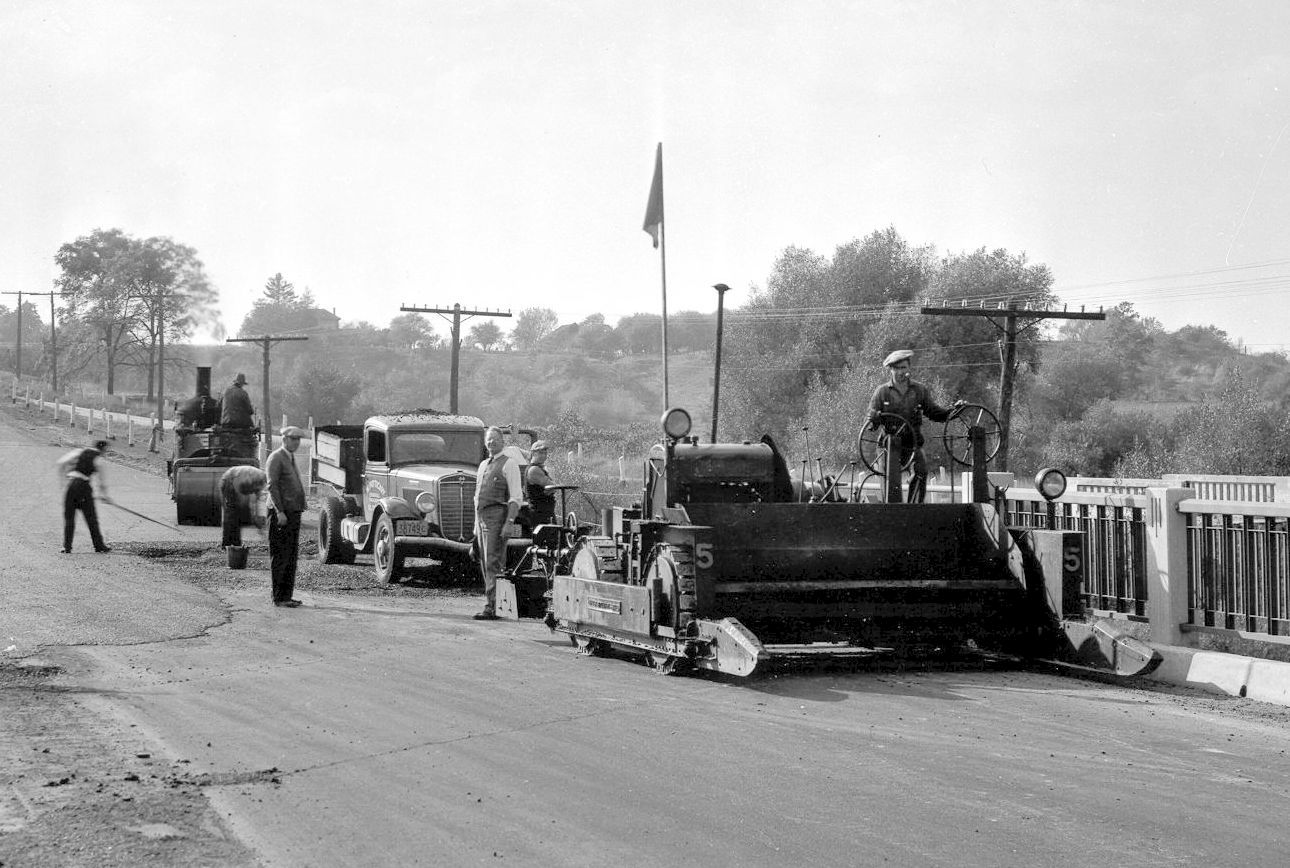
2 minute read
LOOKING BACK AT ROADBUILDING
By HCEA Canada
Pictured here in the mid-1930s is a paving crew at work in Southern Ontario.
Self-propelled asphalt pavers were in demand due to the amount of highway expansion in the era. Several equipment manufacturers built asphalt finishers, such as the Jaegar Co. Ltd. machine that was more concrete oriented.
In addition to asphalt spreaders, Jaegar manufactured concrete pavers, mixer trucks, pumps and compressors in their Ohio-based plant. In the 1950s, Jaegar established a plant in St. Thomas, Ontario to service the quickly expanding Canadian equipment market. This paver, powered by a four-cylinder Hercules gas engine, also featured a vibratory screed for initial asphalt mat compaction. The cumbersome looking paver was based on Jaegar’s slip-form concrete paver design as can been seen in the photo.
By the late 1930s, rival Barber-Greene Ltd. had introduced their Model 879. With upgrades, the asphalt finisher would become the predominant asphalt equipment manufacturer well into the 1970s.
Barber-Greene built asphalt plants, ditching machines, conveyor aggregate systems, snow loaders and crushers. Barber-Greene was acquired by Caterpillar in 1991.
The Historical Construction Equipment Association (HCEA Canada) 2023 event ‘Wheels & Tracks in Motion’ will be held on June 10 and 11, while the ‘Last Blast’ event is on October 14. Both events are held at the Simcoe County Museum near Barrie. To see more than 60 pieces of vintage construction equipment in action be sure to attend. HCEA Canada is a proud Heritage Partner of the Simcoe County Museum. Please visit our website hceacanada.org for updates.

